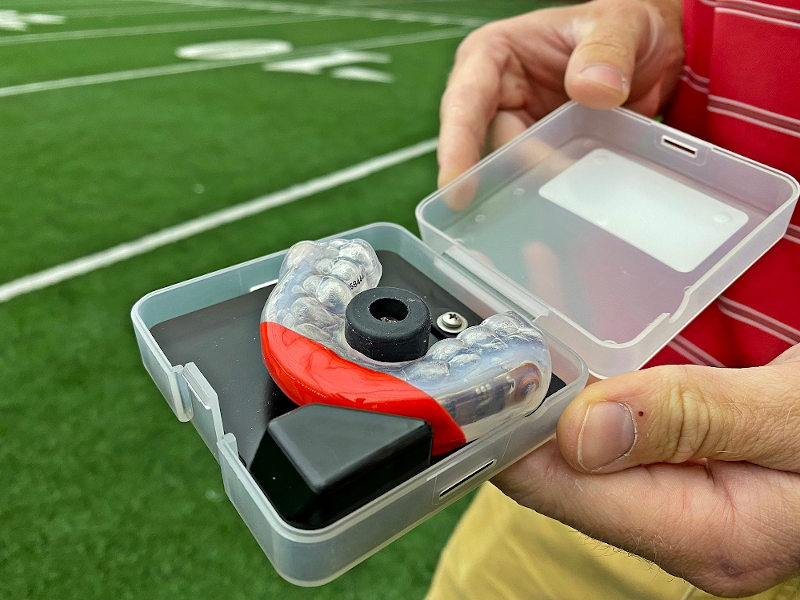
Daniel Cobian holds a specialized mouthguard that will be used by football players involved in the study. The sensors in the mouthguard will collect data on head impacts.
Researchers at the University of Wisconsin School of Medicine and Public Health are partnering with the National Football League (NFL) to study how on-field head impacts can inform injury reduction efforts at the professional and collegiate levels.
Researchers will collect data from high-tech mouthguard sensors currently being used by the football team at University of Wisconsin–Madison that measure kinematic details, such as impact speed, direction, force, location and severity of head impacts. Insights gleaned from the data collected will help inform the NFL’s approach to injury reduction and decrease head impacts overall. Football players at the university have the opportunity to opt in to the NFL’s novel program.
“Reducing the risk of sport-related concussions is a priority for athletes, coaches, and health care providers alike,” said Daniel Cobian, assistant professor of orthopedics and rehabilitation at the UW School of Medicine and Public Health and co-principal investigator for the study. “The more we learn about sport-related concussions, the better we can protect our student-athletes from these injuries and maintain a desirable balance between the benefits of sport participation and the risk of injury.”

Daniel Cobian
Data collected from athletes will be anonymized and analyzed by the NFL Players Association’s independent engineering experts and affiliated consultants. The program is overseen by NFL’s Jennifer Langton, senior vice president of Health and Safety Innovation. UW researchers will also be given a specific statistical analysis that can be used to help inform the UW football team’s efforts to advance player health and safety.
The NFL launched the mouthguard sensor program in 2019 as part of the league’s $60 million commitment to promote health and safety initiatives. The research partnership with UW and three other universities is an expansion of the NFL’s broader approach to driving innovation in the sport, and is the first phase of a program the league expects to expand to additional universities in the coming months and years.
“Sophisticated and specific data collection is central to our work to find better ways to research, diagnose, understand and better prevent injuries,” said Dr. Allen Sills, chief medical officer, NFL. “We are excited to establish this partnership with not only nationally-recognized collegiate football programs who have a direct pipeline to the NFL, but also with esteemed research universities to expand the universe of inputs from which we can analyze, draw conclusions, and develop recommendations for how to make the game safer.”
This latest study strengthens the ongoing research partnership between the NFL and School of Medicine and Public Health. Earlier this year, UW researchers were awarded a four-year, $4 million grant by the NFL to study the prevention and treatment of hamstring injuries for elite football players.
Other universities involved in the head impact research include the University of Alabama, University of North Carolina at Chapel Hill and University of Washington.
